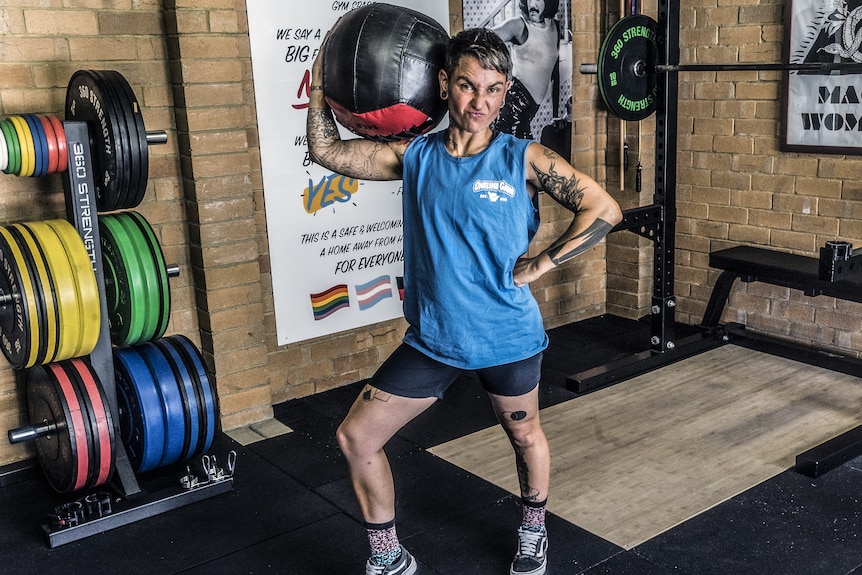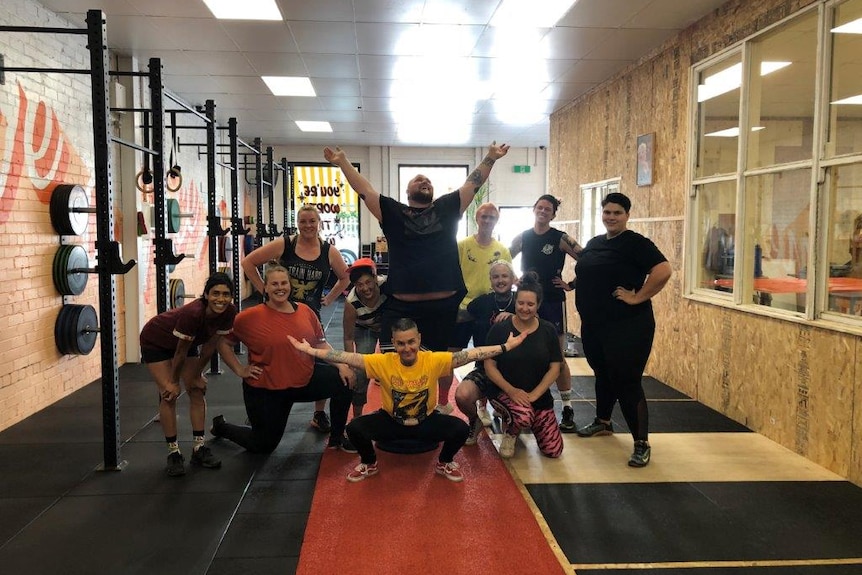Table of Contents
In the pursuit of fitness, we might turn to great workout clothes, a pool membership, or a daily walk—all good, important things.
But many of us forget to build strength, even though as we age, maintaining muscle has the power to transform our lives.
“It’s really vital,” David Scott, an exercise scientist at Deakin University, tells ABC RN’s Life Matters.
Strength training reduces the risk of myocardial infarction and other heart diseases, strokes and cancer.
It also affects your ability to lead a healthy life as an older person, something that is not well understood, Dr. Scott says.
“We need to change the narrative… that it’s inevitable that we’ll get to a point where we’re not able to take good care of ourselves and… where we don’t have a level of independence,” she says. .
“It’s really important for people to understand that you can… avoid getting to that point.”
That is how.
First, what do muscles do for us?
“Muscle has gotten a bad rap,” says Gabrielle Lyon, a US-based author and functional medicine practitioner.
It refers to skeletal muscle (the muscle we use to move bones) as opposed to, say, the cardiac muscle of our heart or the muscle of our digestive system.
“When you think of muscle, you usually think of guys grunting in the weight room or getting picked up and wearing a tight, tanned T-shirt. But skeletal muscle is much more than that,” says Dr. Lyon, author of Forever Strong. : A new science-based strategy for aging well.
“In fact, being in good physical shape and having good athletic performance is a byproduct of having healthy skeletal muscle.
“[It] “It probably has the biggest impact on our health and longevity as we age.”
The main function of skeletal muscle is to help us move. But it’s also a very important site for glucose disposal, says Dr. Scott.
By storing glucose in our muscles, we don’t have as much sugar floating around in our blood, which helps maintain healthy blood sugar levels.
And without that balance, the risk of metabolic diseases, such as diabetes, can increase.
Our muscles as we age
Sarcopenia, the process of losing muscle mass and strength with aging, typically begins between ages 30 and 40 and accelerates between ages 60, 70, and 80, explains Dr. Scott.
That’s when it can present some serious challenges in our daily lives, like managing a house or a garden, for example. Sarcopenia has also been linked to cognitive impairment.
“Over time, we can reach a point where we lose our independence and need the support of a caregiver or potentially enter an aged care facility. This increases our risk of falls and fractures. And these are important public health issues for our aging population,” Dr. Scott says.
But, although there is a decrease in the capacity of our muscles as we age, there is still much we can do to maintain a healthy and strong body.
“It’s not about being bigger. It’s really about being able to be functional,” says Dr. Scott.
“We’re being active in getting better in life, in being able to move through life in a way that ultimately keeps us out of nursing homes, that prevents falls, that allows us to do the shopping, put it away and take it back. [home] and put our suitcase on top.
“That’s why we’re really doing these things.”
How to build muscle
We should include strength training in our exercise routines at least two days a week, for about 30 minutes to an hour at a time, says Dr. Scott.
He suggests trying to do three sets of six to 12 repetitions of each strengthening exercise. And there are many different ways to do them.
“Sometimes there is a perception that we need to go to the gym to do this type of training. But you can do it at home just using your own body weight.”
Bodyweight exercises include squats, moves like the bird dog or dead bug (look them up: they’re easier than they look), or a sit-to-stand exercise where you sit in a chair and stand up without using your arms. arms. as fast as possible.
You don’t have to dedicate a block of time to your day. Small amounts of exercise (for example, a few 10- to 15-minute blocks) at various times of the day are “absolutely” effective for strength training, says Dr. Scott.
And if you’re using weights, he recommends starting by lifting about 40 percent of the maximum weight you can lift for each exercise. Then, as you improve, you can gradually increase it to about 80 percent.
Resist the stress and pressure of exercise
Ella Mason, a gym trainer and owner of Pony Club Gym in Melbourne’s north, says people often hold back from exercising because they think unless they do three or more sessions a week it’s pointless.

“But [doing] “Anything once a week is more than doing nothing… Any movement is good, or any routine is good,” says Mx Mason.
“It’s best to aim for a routine that’s doable, so you’re more likely to stick with it throughout your life, which is more beneficial than stopping and starting.
“But it’s also okay to take a break… You have to adapt to where your body is because life is in flow and energy is in flow.”
Mx Mason says there are misconceptions floating around about “sporty people and non-sporty people,” or those who can perform certain movements and those who can’t.
“That’s a lot of rubbish,” they say.
“I have seen all agencies do all things, if given the opportunity and the right information.
“Our bodies are literally made to move. And I think having the confidence and support to do that is really the only problem.”
RN in your inbox
Get more stories from beyond the news cycle with our weekly newsletter.

